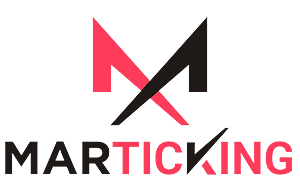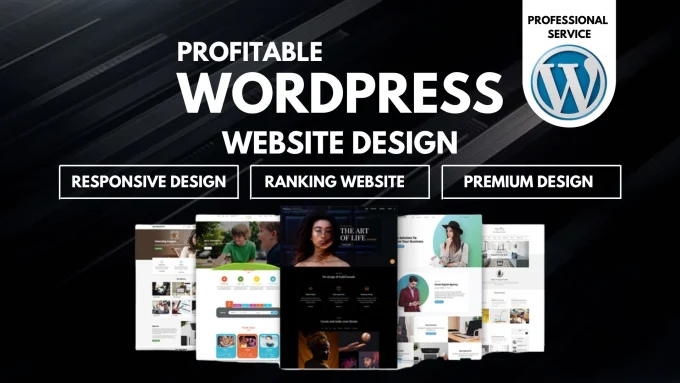In the vast landscape of online entrepreneurship, creating a profitable website is not just a goal but a dynamic journey. WordPress, with its user-friendly interface and robust features, stands as a powerful ally in this quest for digital success. This exploration delves into the art and science of building a profitable website using WordPress, unraveling the key strategies, tools, and insights that can transform your online presence into a thriving business venture.
WordPress Web Designing: Crafting Engaging and Functional Websites
In the ever-evolving landscape of web design, WordPress stands out as a versatile and user-friendly platform that empowers individuals and businesses to create stunning and functional websites. Whether you’re a novice or an experienced designer, WordPress offers a plethora of tools and features that streamline the web designing process. This exploration delves into the art and principles of WordPress web designing, unveiling key strategies, customization options, and best practices to create websites that not only captivate visitors but also deliver seamless user experiences.
Understanding WordPress as a Web Design Platform:
WordPress as a Content Management System (CMS): Explore how WordPress functions as a robust CMS, allowing for easy content creation, management, and customization.
– Themes and Templates: Delve into the extensive library of WordPress themes and templates, understanding how to choose or customize them to align with your brand and design preferences.
Essential Elements of WordPress Web Design:
– Responsive Design: Emphasize the importance of responsive design to ensure your website looks and functions seamlessly across various devices.
– Navigation and User Experience: Discuss strategies for creating intuitive navigation and optimizing user experience to keep visitors engaged.
Customization and Personalization:
– Plugins and Widgets: Explore the world of plugins and widgets, understanding how they enhance functionality and add dynamic features to your website.
– Customization Options: Learn how to personalize your website with custom colors, fonts, and layouts, ensuring a unique and branded look.
Optimizing for Performance and SEO:
– Speed Optimization: Discuss techniques for optimizing website speed, a critical factor for user satisfaction and search engine rankings.
– SEO Best Practices: Explore SEO-friendly practices within WordPress, such as optimizing meta tags, images, and content for improved visibility.
E-Commerce Integration:
– WooCommerce: Discover the power of WooCommerce for adding e-commerce functionality to your WordPress site. Learn how to set up an online store and manage products effectively.
Security and Maintenance:
– Security Measures: Highlight essential security measures to protect your WordPress website from potential threats and vulnerabilities.
– Regular Maintenance: Emphasize the importance of routine updates, backups, and monitoring to keep your website running smoothly.
Responsive Web Design Trends:
– Explore current trends in responsive web design, such as minimalism, bold typography, and immersive visuals, to stay current and deliver modern user experiences.
WordPress Community and Resources:
– Tap into the vast WordPress community for support, insights, and resources. Discover forums, tutorials, and documentation to enhance your web designing skills.
How to make business web site
Creating a business website involves several steps, from planning and domain registration to design, content creation, and optimization. Here’s a step-by-step guide on how to make a business website:
1. Define Your Purpose and Goals:
– Clearly outline the purpose of your website and identify specific goals. Determine if your site will serve as an informational platform, an online store, or a combination of both.
2. Choose a Domain Name and Register It:
– Select a domain name that reflects your business and is easy to remember. Use a reputable domain registrar to register your chosen domain.
3. Select a Reliable Web Hosting Provider:
– Choose a web hosting provider that offers reliable services, good customer support, and scalability. Consider factors like server uptime, bandwidth, and storage.
4. Install WordPress:
– If you’re new to web development, consider using WordPress, a user-friendly content management system. Many hosting providers offer one-click WordPress installations.
5. Choose a Professional Theme:
– Select a WordPress theme that aligns with your business brand and goals. There are both free and premium themes available, providing various design options.
6. Customize Your Website:
– Personalize your website by customizing the theme, adjusting colors, fonts, and layouts. Add your business logo and ensure a cohesive visual identity.
7. Create Essential Pages:
– Include crucial pages like Home, About Us, Services/Products, Contact, and a Blog if relevant. Provide clear and concise information about your business, its offerings, and how visitors can get in touch.
8. Add Compelling Content:
– Craft engaging and informative content for your pages. Clearly communicate your value proposition, unique selling points, and any other relevant details that showcase your business.
9. Implement Contact Forms:
– Create a contact form to make it easy for visitors to reach out to you. Include essential fields such as name, email, subject, and message.
10. Set Up Navigation:
– Design an intuitive navigation menu. Ensure that visitors can easily find the information they are looking for. Keep the menu structure simple and organized.
11. Optimize for SEO:
– Implement on-page SEO techniques by optimizing meta titles, descriptions, and image alt tags. Use SEO-friendly URLs and create a sitemap. Consider installing an SEO plugin for additional optimization.
12. Mobile Responsiveness:
– Ensure your website is mobile-friendly. Most WordPress themes are responsive, but it’s essential to check and make adjustments if needed.
13. Secure Your Website:
– Install a security plugin to protect your website from potential threats. Regularly update your plugins, themes, and WordPress core for enhanced security.
14. Add Social Media Integration:
– Integrate social media buttons and feeds to encourage social sharing and provide links to your business’s social profiles.
15. Test Your Website:
– Before launching, thoroughly test your website for functionality, usability, and responsiveness. Check for broken links and ensure that all forms are working correctly.
16. Launch Your Website:
– Once satisfied with the testing, launch your website. Announce its launch through your social media channels, email newsletters, and other marketing channels.
17. Monitor and Update Regularly:
– Regularly monitor your website’s performance, track analytics, and make necessary updates. Fresh content, regular backups, and security updates contribute to ongoing success.
Best WordPress business
- Divi by Elegant Themes: Divi is a versatile and highly customizable theme with a drag-and-drop builder.
- Astra: Astra is a lightweight and fast theme that works well for various business websites. It integrates seamlessly with popular page builders.
- Ocean WP: Ocean WP is a flexible and responsive theme with a range of customization options suitable for business websites.
- Avada: Avada is a bestselling multipurpose theme that comes with a built-in drag-and-drop builder, making it easy to create a professional-looking business site.
- Generate Press: Generate Press is a lightweight and fast theme that is highly customizable. It’s a great choice for businesses looking for a clean and efficient design.
- Sydney: Sydney is a powerful business theme with a full-screen slider, custom logo support, and various layout options. It’s suitable for a wide range of industries.
- Neve: Neve is a multipurpose theme known for its speed and flexibility. It integrates seamlessly with popular page builders and is suitable for various business websites.
- Enfold: Enfold is a responsive and user-friendly theme that offers a wealth of customization options. It’s particularly well-suited for businesses that want a modern and stylish look.
- The7: The7 is a versatile theme with a modern design and a powerful set of features. It’s compatible with popular plugins and is suitable for a variety of businesses.
- Business Hub: Business Hub is designed specifically for business and corporate websites. It includes features like portfolio layouts, team member profiles, and client testimonials.
Conclusion:
In conclusion, building a profitable website with WordPress requires a strategic blend of thoughtful planning, technical implementation, and ongoing refinement. By defining your niche, selecting reliable hosting, and utilizing professional themes and essential plugins,
you set a solid foundation. Creating high-quality, user-centric content and implementing effective SEO strategies contribute to attracting and retaining a target audience. With a commitment to quality, relevance, and user satisfaction, you can build and sustain a profitable online presence.


